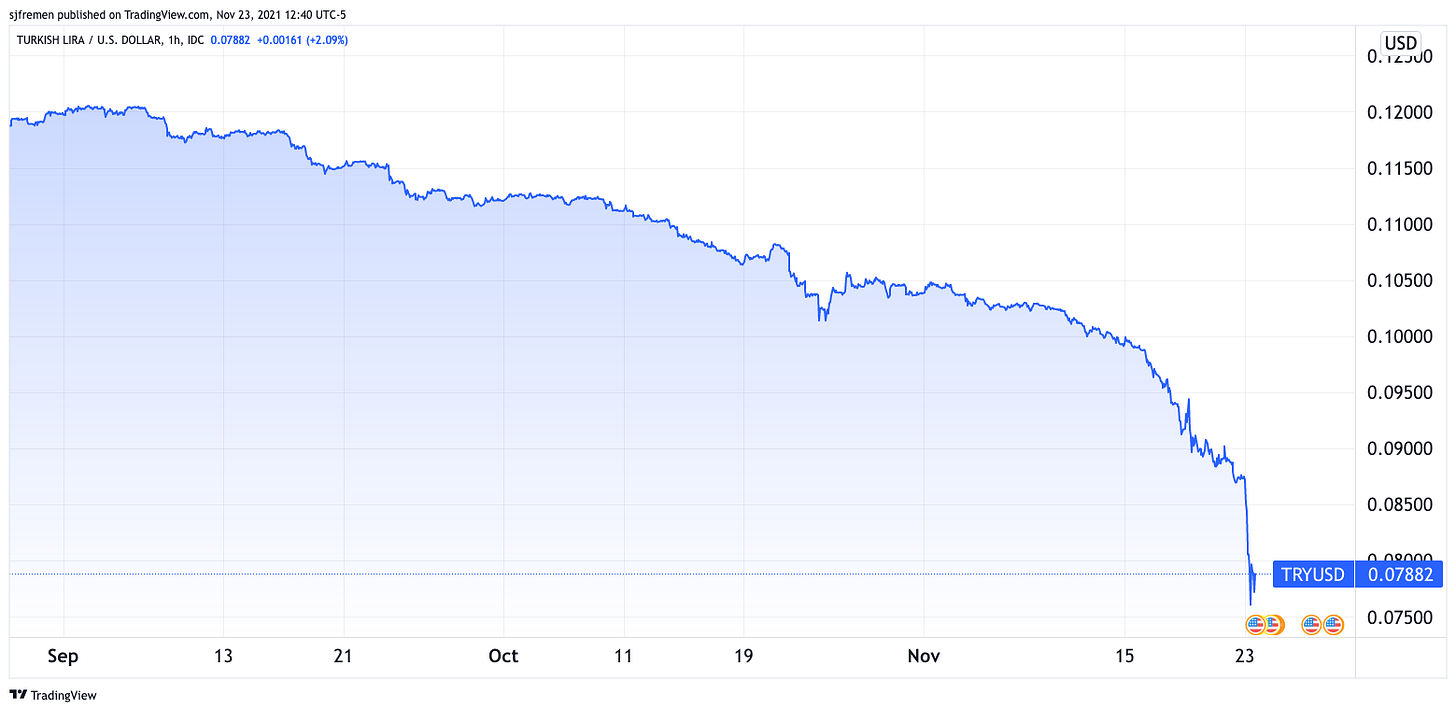Turkish Lira Currency Crisis
The Turkish lira is in free fall today after President Erdogan demanded the Central Bank of Turkey to cut rates for a third consecutive month from 19% to 15%. The Turkish lira against the U.S. dollar has been weakening over the past decade, but today the currency saw rapid deceleration losing over 10% of its value in one day hitting an all-time low. It’s a historic event for a G20 country.
What makes the economic situation worse is that Turkey’s Consumer Price Index has been accelerating over the last two years, now well above their central bank’s rate at 19.89%. With domestic inflation rising, real rates will collapse, incentivizing investment capital to flee for foreign investments. A collapsing currency will now only accelerate this trend of inflation and negative real rates as it’s not clear how Turkey can stabilize its currency without a lack of foreign exchange reserves to lean on.
Additionally, $13 billion in Turkish external debt is set to mature this month and next month. The repayments on the debt increases demand for foreign currencies, adding even more sell pressure to the Turkish lira.


The president’s aim with lowering rates is to increase economic growth, decrease unemployment and spark more exports. Yet, it is the Turkish citizen who faces a severe decline of purchasing power at an unprecedented rate during a period of soaring prices and political instability.
With the currency’s value eroding at this accelerated pace, bitcoin is hitting new all-time highs against the Turkish lira. This year, it has proven to be the best-performing store of value when compared against U.S dollar and gold alternatives. Money will flee to assets that can maintain local purchasing power and bitcoin offers the exact solution to the type of chaos that is unfolding. The bigger question now is, ”How will the Turkish people respond?”
Short-Term Holder Update
We have extensively covered the dynamics that short-term holders have in the bitcoin market and what effects these players have in driving bull and bear markets.
To summarize, during bull markets short-term holders chase price higher, dragging the short-term holder cost basis higher. In bear markets, the short-term holder cost basis is higher than price, and serves as a resistance for market price.
This can be seen clearly looking at the short-term holder market value to realized value ratio (STH-MVRV).
Currently, the cost basis of short-term holders is $52,700, thus meaning that this price level is a key line in the sand for market structure, and strong support should be expected at this level, as new money looks to protect their entry price.
Perpetual Swaps Funding Update
Funding rate on perpetual swaps futures has nearly reached neutral over the last couple of days, and when compared to the times when price was at the similar levels over the course of 2021, one can see just how different market structure is. With the derivatives market far less biased to the long side, any significant downwards pressure that bitcoin may see would likely be a result of a macroeconomic-driven move (i.e. the dollar strengthening significantly, as covered in yesterday’s Daily Dive).











i don't like shorting currency... but, this is like free money. ₿